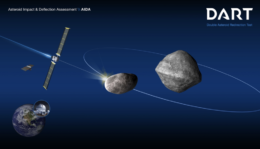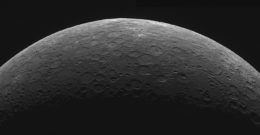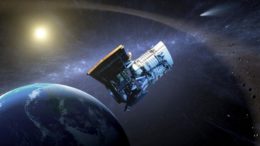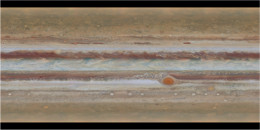At the end of 2019, we announced the launch of a new publication in the American Astronomical Society’s journal family: The Planetary Science Journal (PSJ), a peer-reviewed journal that covers “all aspects of investigation of the solar system and other planetary systems.”
Now, PSJ has officially published its first issue. Read on for a look at the first articles included, and follow the links to the full open-access articles if you’d like to learn more!
Origin of a Battered Lunar Layer
The surface of the Moon has been constantly bombarded by small, rocky bodies over its lifetime, fracturing its crust down to depths of perhaps 20 km. Planetary Science Institute scientists James Richardson and Oleg Abramov have now modeled this process to better understand how the upper megaregolith — the battered layer of lunar dirt 1–3 km deep that lies just below the Moon’s surface — formed.
“Modeling the Formation of the Lunar Upper Megaregolith Layer,” James E. Richardson and Oleg Abramov 2020 Planet. Sci. J 1 2. doi:10.3847/PSJ/ab7235
Will Asteroid Ejecta Arrive at Earth?

Schematic shows the planned impact of DART on Didymos B, while observatories on Earth watch. [NASA/Johns Hopkins Applied Physics Lab]
“On the Delivery of DART-ejected Material from Asteroid (65803) Didymos to Earth,” Paul Wiegert 2020 Planet. Sci. J 1 3. doi:10.3847/PSJ/ab75bf
Observing Mercury’s Exosphere at Twilight

Mercury possesses only a very thin atmosphere. [NASA/Johns Hopkins University APL/Carnegie Institution of Washington]
“The Rapid Imaging Planetary Spectrograph: Observations of Mercury’s Sodium Exosphere in Twilight,” Carl A. Schmidt et al 2020 Planet. Sci. J 1 4. doi:10.3847/PSJ/ab76c9
Characterization of Nearby Asteroids and Comets
The Near-Earth Object Wide-field Infrared Survey Explorer (NEOWISE) spacecraft has been conducting an infrared survey to detect and characterize asteroids and comets since its reactivation in 2013 December. Led by Joseph Masiero (Jet Propulsion Laboratory/Caltech), a team of scientists now reports on the 374 near-Earth objects and 11,607 main-belt asteroids the mission detected in its fourth and fifth years.
“Asteroid Diameters and Albedos from NEOWISE Reactivation Mission Years 4 and 5,” Joseph R. Masiero et al 2020 Planet. Sci. J 1 5. doi:10.3847/PSJ/ab7820
Learning about Fluid Stability from Jupiter’s Jets
Inviscid shear instability is a common type of fluid instability that governs the dynamics of everything from meandering jet streams in atmospheres and oceans to the formation of planets in protoplanetary disks. Scientist Timothy Dowling (University of Louisville) has used observations from the two Voyager flybys, the Galileo entry probe, the Cassini flyby, and the Juno orbiter to study this instability in Jupiter’s zonal jets — the atmospheric flows in the light bands that encircle the planet.“Jupiter-style Jet Stability,” Timothy E. Dowling 2020 Planet. Sci. J 1 6. doi:10.3847/PSJ/ab789d
Getting Rid of Mercury’s Mantle
Why does Mercury have such an unusually large iron core? One hypothesis is that Mercury formed with a silicate-to-iron ratio closer to that of Earth, but its silicate mantle was stripped off by a giant impact in its past, leaving behind the large fraction of iron. Scientists Christopher Spalding (Yale University) and Fred Adams (University of Michigan) show that the primordial solar wind — which was stronger than the solar wind of present day — could have produced enough drag to push the silicate ejecta away and prevent the material from reaccreting onto Mercury’s surface.
“The Solar Wind Prevents Reaccretion of Debris after Mercury’s Giant Impact,” Christopher Spalding and Fred C. Adams 2020 Planet. Sci. J 1 7. doi:10.3847/PSJ/ab781f
To keep tabs on more planetary science articles as they’re published in PSJ, you can visit the journal homepage and sign up for new issue notifications: https://iopscience.iop.org/journal/2632-3338





1 Comment
Pingback: Allgemeines Live-Blog ab dem 14. März 2020 | Skyweek Zwei Punkt Null